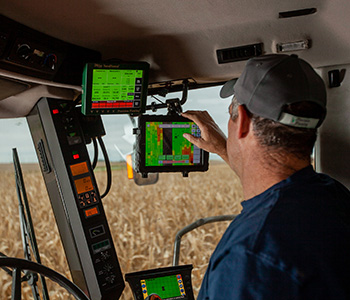Tight Margins: Let Your Harvest Data Work Harder for You
Oct 01, 2025

Jared Tokle
CENTROL Precision Ag Manager
As harvest wraps up, every pass across the field generates valuable information. But the old saying holds true: garbage in, garbage out. The quality of your data directly impacts the decisions you make for next year—especially when farming margins are tight.
This fall’s data is more than a record of the crop—it’s the foundation for next year’s plan. Clean, accurate information helps make better decisions, especially when margins are slim:
Next Step: Work with your CENTROL Precision Ag team and your Key Cooperative agronomist to ensure your harvest data is accurate and actionable. Together, we can help clean up files, compare hybrid performance, and build fertility and management plans that keep profitability front and center.
CENTROL Precision Ag Manager
As harvest wraps up, every pass across the field generates valuable information. But the old saying holds true: garbage in, garbage out. The quality of your data directly impacts the decisions you make for next year—especially when farming margins are tight.
Why Data Quality Matters
- Yield Maps – Poorly calibrated monitors can make maps misleading, hiding hybrid performance or overstating problem areas.
- Hybrid Performance – Clean yield data helps you compare hybrids across soil types and make confident seed decisions.
- Planter Accuracy – Overlay yield and planting data to uncover skips, doubles, or row-unit issues that cost bushels.
- Fertility Insights – Combine yield maps with soil samples to confirm nutrient plans or spot deficiencies.
Tips for Better Data Collection
- Calibrate yield monitors early and re-check as conditions change.
- Verify moisture sensors—even small errors skew results.
- Keep displays organized with consistent field names.
- Back up your data to a USB or cloud storage.
Turning Data Into Decisions
This fall’s data is more than a record of the crop—it’s the foundation for next year’s plan. Clean, accurate information helps make better decisions, especially when margins are slim:- Hybrid Selection for 2026 – Look for hybrids that are not just top-yielding, but also consistent across acres and soil types. Consistency often wins out in profitability when compared to 'home run' hybrids that only perform in ideal conditions.
- Planter Performance – Stand establishment issues mean wasted seed and lost yield. Analyzing yield maps against as-planted data can highlight skips, doubles, or uneven emergence that can be corrected with adjustments or preseason maintenance.
- Fertility Planning – Fertilizer is one of the biggest expenses in crop production. Yield data paired with soil tests can guide variable-rate applications, putting nutrients where they’ll generate the highest return and cutting back where response is limited.
- Management Zones – Multiple years of yield data can be layered to create management zones. These zones help fine-tune seeding rates, nitrogen strategies, and fungicide applications, ensuring every dollar is working harder.
- ROI Tracking – Not every practice or product delivers profit. Using data to measure return on investment helps focus resources on what truly pays back—an essential step in today’s tight margin environment.
Next Step: Work with your CENTROL Precision Ag team and your Key Cooperative agronomist to ensure your harvest data is accurate and actionable. Together, we can help clean up files, compare hybrid performance, and build fertility and management plans that keep profitability front and center.